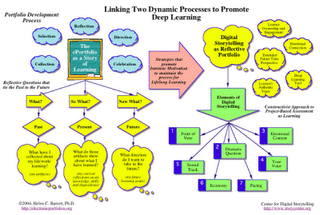A learning classroom would also stimulate opportunities for
deep learning.One article I found compared the attributes of deepand surface learning thus:
"Deep and Surface are two approaches to study, derived from original empirical research by
Marton and Säljö (1976) and since elaborated by
Ramsden (1992),
Biggs (1987, 1993) and
Entwistle (1981), among others.
It is important to clarify what they are not.
Although learners may be classified as “deep” or “surface”, they are not attributes of individuals: one person may use both approaches at different times, although she or he may have a preference for one or the other.
They correlate fairly closely with motivation: “deep” with intrinsic motivation and “surface” with extrinsic, but they are not necessarily the same thing. Either approach can be adopted by a person with either motivation.
There is a third form, known as the “Achieving” or strategic approach, which can be summarised as a very well-organised form of Surface approach, and in which the motivation is to get good marks. The exercise of learning is construed as a game, so that acquisition of technique improves performance. It works as well as the analogy: insofar as learning is not a game, it breaks down.
Deep Learning 1. Focus is on “what is signified”.
2. Relates previous knowledge to new knowledge.
3. Relates knowledge from different courses.
4. Relates theoretical ideas to everyday life.
5. Relates and distinguishes evidence and argument.
6. Organises and structures content into a coherant whole.
7. Emphasis is on the internal, from within the student.
Surface Learning1. Focus is on the “signs” (or on the learning as a
signifier of something else)
2. Focus on unrelated parts of the task
3. Information for assessment is simply memorised
4. Facts and concepts are associated unrelfectively
5. Principles are not distinguished from examples
6. Task is treated as an external imposition
7. Emphasis is external, from demands of assessment
Taken From
http://www.learningandteaching.info/learning/deepsurf.htmI found another amusing article that forms a manifesto of sorts on strategic learning (the 'well-organised' style of surface learning) :)
http://www.tabula-rasa.ssu.swin.edu.au/articles/bludgers.html












